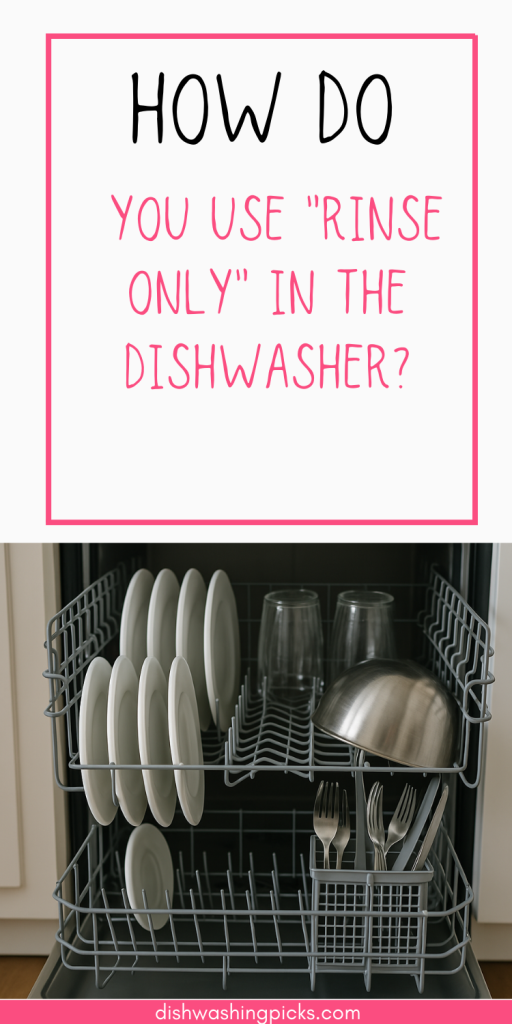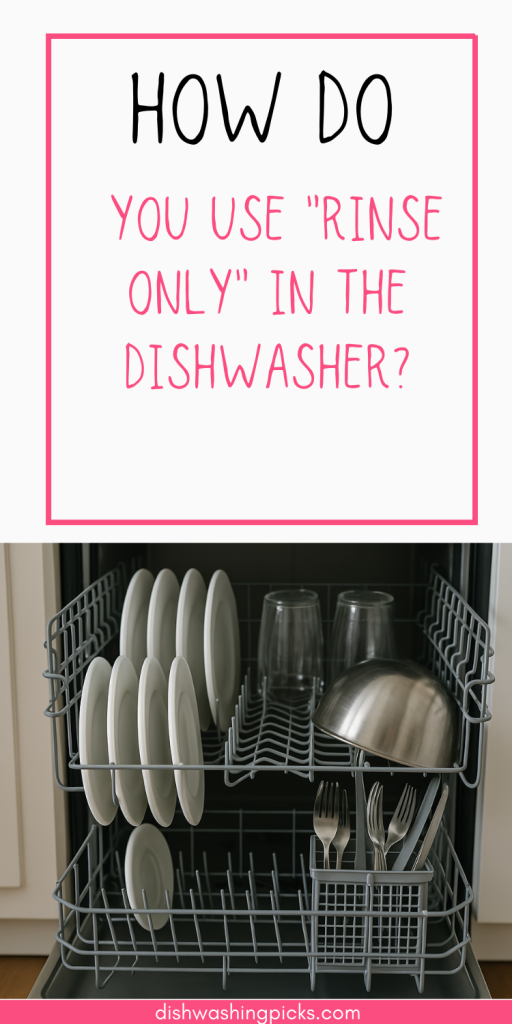
(And Why It Might Be the Underrated Hero of Your Kitchen)
Alright, let’s be real—dishwashers are amazing. You toss in the dirty stuff, hit a button, walk away, and voilà! Clean dishes. But ever notice that little button that says “Rinse Only”? Yeah, that one you’ve probably ignored for years. Turns out, it’s not just there for decoration.
Let’s break it down. What is this setting even for? When should you use it? And more importantly—is it actually worth it? (Spoiler: yes, yes it is.)
First Things First: What Even Is “Rinse Only”?
Okay, so you’ve got a bunch of dirty dishes—but not quite enough to run a full load. Maybe it’s just your morning cereal bowl, a couple of coffee mugs, and a fork that fell behind the sink. You don’t want to leave them sitting there getting… gross. But you also don’t want to waste water and energy on a full wash.
Enter: Rinse Only.
It’s basically a light rinse cycle—no detergent, no super hot water, no drying. Just a quick splash to keep food from sticking and smells from settling in. Think of it like a mini car wash, but for your plates. It doesn’t get things squeaky clean, but it holds you over until you’re ready to do a real wash.
When Should You Use Rinse Only?
Great question. Here’s when it really comes in clutch:
- You’re not running a full load yet. Got a few dishes now, but waiting to add more later? Hit that Rinse Only button. Keeps the stink away.
- You’re meal-prepping or cooking in stages. Prepping dinner and using the same pan a few hours later? Rinse Only can keep stuff from crusting over while you cook.
- You’re avoiding the dreaded dried-on mess. Seriously, once that cheese or egg yolk dries up? It’s game over. Rinse Only saves you from the chisel treatment later.
And hey, maybe you’ve got guests over and don’t want your sink looking like a science experiment. No judgment. Pop those dishes in the washer and hit Rinse. It’s the adulting move you didn’t know you needed.
How to Actually Use It (It’s Easier Than You Think)
Now you might be wondering, “Okay but… how do I even use this setting?” Honestly, it’s super easy:
- Load your dishwasher like usual. No need to be fancy here. Just put in whatever’s dirty.
- Skip the detergent. This is a water-only rinse, so don’t waste the soap.
- Find the “Rinse” or “Rinse Only” button. Every dishwasher is a little different, but most have a clear option for it. (If not, check your manual—or Google your dishwasher model like the rest of us.)
- Press Start. Boom. Done. Go live your life.
The cycle usually only takes 10–15 minutes. It’s quick, efficient, and surprisingly satisfying.
When Not to Use It
Alright, here’s where you don’t want to rely on Rinse Only:
- If the dishes need to be actually clean. This isn’t a replacement for a full wash. It’s just a temporary step.
- If stuff’s already dried on. Sorry, but once things get crusty, Rinse Only isn’t gonna cut it. You’ll need the big guns (a full wash or some old-fashioned scrubbing).
- If you’re about to run a load anyway. No need for an extra rinse if you’re hitting “Normal Wash” five minutes later.
Basically, don’t expect miracles—it’s a helpful tool, not a dishwasher magic trick.
Finally: Is Rinse Only Worth Using?
Absolutely. It’s one of those low-key features that quietly makes your life easier. It keeps your dishwasher from smelling funky, prevents gunk from drying on your dishes, and saves you from unnecessary elbow grease later.
So next time you’re in that in-between stage—not quite ready to do a full load, but not into the idea of letting your dishes ferment in the sink—just remember: Rinse Only is your friend.
Go ahead, give it a try. Your future self (and your nose) will thank you.
Need help figuring out other dishwasher mysteries? Like… what really goes on with drying cycles? Or whether pre-rinsing is actually necessary? Just say the word—we’ll dive in with the same chill vibe, no judgment, all real talk.
Want to keep the home hacks coming? Hit me up!

